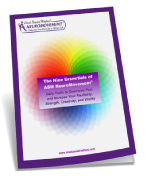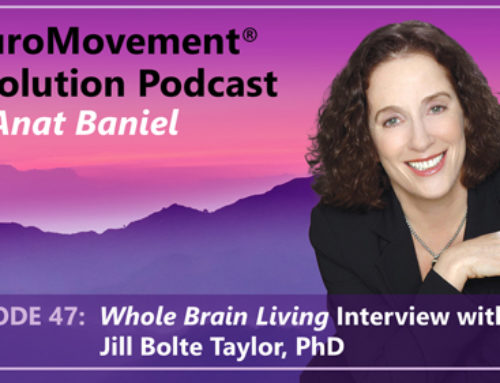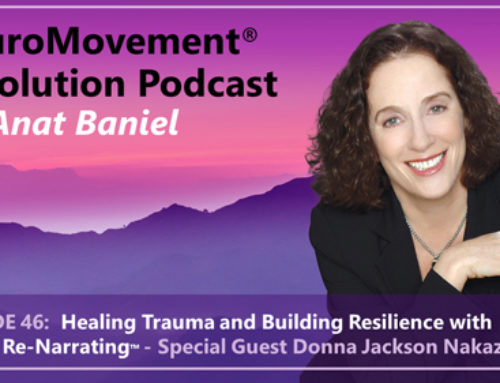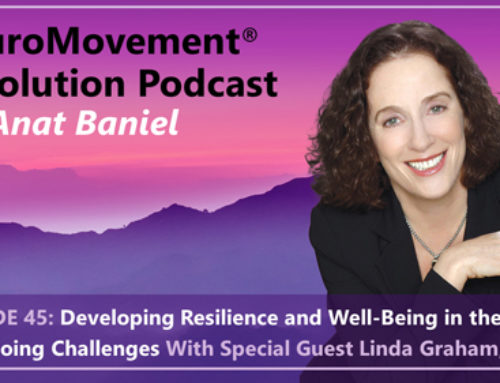The Fitness Myths That Hold You Back, and How to Succeed: Myth 1
The Training Your Muscles Myth
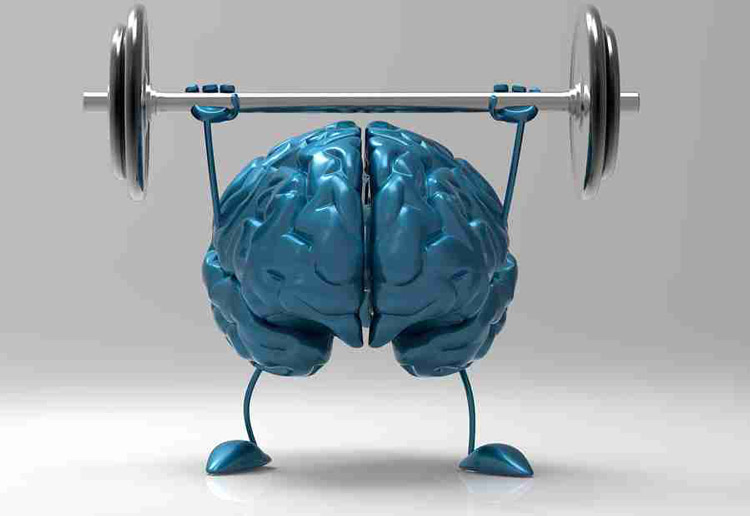
Are you one of the many thousands of people who have made a New Year’s resolution to exercise regularly and get more fit? Are you also one of the many who have made the same resolution in the past just to keep it for a couple months, or perhaps a week or two, or maybe not at all?
Know that you are not alone. Do not berate yourself. There are very good reasons why so many people fail at fulfilling their genuine intent to become more fit in the new year. And it is not just lack of willpower.
So, why is it so difficult for so many people to follow through on their fitness resolutions?
The answer is that there are certain myths about what it takes to become more fit — increase our flexibility, strength, coordination, and stamina—that contradict what our bodies really need and require. Trying to achieve fitness, usually meaning physical fitness, is based upon myths that make it challenging, if not impossible, to commit to and achieve a successful fitness regime.
Today, I would like to introduce the first myth, the “Training Your Muscles” myth, based on the Anat Baniel Method® NeuroMovement® approach to fitness. NeuroMovement is a holistic approach to human functioning and action, based in the understanding that the brain organizes all movement. With this approach, brain change (neuroplasticity) plays a critical role in becoming physically fit. There are immediate ways for you to take advantage of the remarkable capacity of your brain to change itself and create new pathways for greater fitness and health.
Muscles Do Not Have a Mind of Their Own
There is no question that to be able to move, we need our muscles, and that stronger muscles provide us with the possibility for stronger, more powerful movement and stamina, making us more fit. However, muscles do not know what to do on their own. It is the brain that “tells” the muscles what to do—when to contract and when to let go—through the signals it sends to the muscles.
And in order for the brain to know what signals to send to our muscles, it has to first “know” that the muscles are there to be used and learn how to coordinate the different muscle groups successfully. Perhaps you’ve had the experience of trying to tone and strengthen certain muscles in your body and no matter how hard you exercised, it didn’t work. This is because your brain never connected fully enough to these muscles. The brain needs a rich variety of experiences from which it creates the necessary connections and patterns of our movements, also known as “mapping” in the brain.
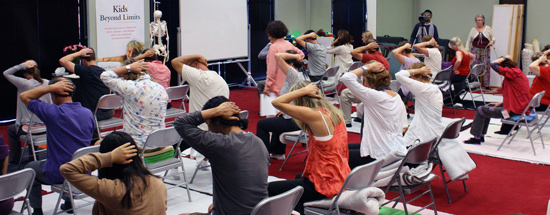
Fitness Myth 1: The Training Your Muscles Myth
How well your brain knows what commands to give your muscles will decide the quality with which you will move, or whether you will even be able to do the movement altogether. The “Training Your Muscles” myth assumes that we can train muscles directly by doing lots of repetitions of certain movement. Only when you have a well-organized NeuroMovement pattern can you successfully begin to increase your strength, speed, and flexibility.
If your brain has not gotten the information it needs to be able to create the necessary patterns of the movement you are trying to do, you will either simply fail and eventually give up or you’ll do the movement poorly, making it very difficult to do, often times painful, and even injurious.
What we all need is to first provide our brain with information it can use to create more refined, accurate, and well-organized patterns for us to do any movement in an efficient, easy, safe, and pleasurable way. So how can this be done?
The Anat Baniel Method has defined Nine Essentials, each one providing an easy and very powerful way to flood the brain with new information that it needs. In this article, we will introduce you to the first Essential, and the rest will come in future posts.
Movement With Attention: First Essential of Anat Baniel Method NeuroMovement
Brain research has shown that movement done automatically does not create new connections in the brain, but rather it grooves in more deeply existing brain patterns (those stubborn limitations we often experience). However, the moment we bring attention to what we feel as we do any movement, there is an immediate, dramatic increase in the number of new connections associated with the areas of body that we are moving.
You can start right away. You can bring your attention to what you feel with any movement you do, and you’ll immediately wake up your brain to form new connections. It might seem too easy to be true, but it works. And it will make it easier and even fun to stick with your fitness program!
For example, if you are walking on a treadmill, slow down the speed to a safe level for just a few minutes. And as you walk, pay attention to what you feel in the soles of your feet, in your ankles, in the back of your knees, your hip joints, your spine, your shoulders, and your neck. Pay attention, notice the movement of your breath and what it feels like.
Or if you are doing a yoga pose, as you move into the pose, pay attention to what you feel in the different parts of your body as you do it. Genuinely get interested in and focused on what you feel. For a few moments, don’t worry how well you are performing. Just pay attention to yourself.
Try this 10-minute NeuroMovement video lesson and practice Movement with Attention.
Movement with Attention will increase your flexibility, strength, endurance, balance, and skillfulness (i.e., your fitness). It can also reduce aches and pains, prevent injury, and promote greater joy, creativity, mental clarity, and problem-solving skills. This way of approaching fitness will help you learn how to be in the here and now, while enjoying greater physical and mental health.
Give it a try and let us know how it works for you. I’d love to hear about your experiences.
Anat Baniel
Related Resources and Research
Baniel A. 2009. Move into Life: The Nine Essentials for Lifelong Vitality. New York: Harmony Books.
The brain has the ability to figure itself out: The brain is the ultimate self-organizing system. Thompson E, Varela FJ. 2001. Radical embodiment: Neural dynamics and consciousness. Trends in Cognitive Sciences 5: 418- 25. Lewis MD, Todd RM. 2005. Getting emotional– A neural perspective on emotion, intention and consciousness. Journal of Consciousness Studies 12(8- 10): 213- 38.
What we know from the science of neuroplasticity: “[T]he realization that the adult brain retains impressive powers . . . to change its structure and function in response to experience”: Begley S. 2007. How the brain rewires itself. Time, January 19. See also Doidge N. 2007. The Brain That Changes Itself. New York: Viking.
Research shows that movement done automatically creates little or no new connections in the brain: “[T]he variable determining whether or not the brain changes is . . . the attentional state of the animal.” Schwartz J, Begley S. 2002, rpnt 2003. The Mind and the Brain: Neuroplasticity and the Power of Mental Force. New York: HarperCollins. Recanzone G. H, Merzenich MM, Jenkins WM, et al. 1992.Topographic reorganization of the hand representation in cortical area 3b of owl monkeys trained in a frequency discrimination task. Journal of Neurophysiology 67: 1031-56. Nudo RJ, Milliken GW, Jenkins WM, Merzenich MM. 1996 Use-dependent alterations of movement representations in primary motor cortex of adult squirrel monkeys. Journal of Neuroscience 16: 785- 807. See Doidge N. 2007. The Brain That Changes Itself. New York: Viking/ Penguin.
When attention is brought to movement, the brain creates new connections and possibilities at an incredibly rapid rate: My teacher and colleague, Moshe Feldenkrais, used movement to increase awareness, which in turn helped to upgrade people’s functioning, often in breakthrough ways; he had his students pay close attention while moving as a way to enhance functioning. However, he did not formulate Movement with Attention as an Essential per se, that is, distinct from awareness.
Think of Movement with Attention as bringing about a virtual explosion of activity in the brain: Scans showed high levels of activity in the prefrontal cortex during new learning but not once the performance became routine. Jueptner M, Stephan K, Frith CD, et al. 1997. Anatomy of motor learning. I. Frontal Ccrtex and attention to Action. Journal of Neurophysiology77(3): 1313- 24. Johansen- Berg H, Matthews PM. 2002. Attention to movement modulates activity in sensori- motor areas, including primary motor cortex. Experimental Brain Research 142(1): 13- 24.
“Experience coupled with attention leads to physical changes in the structure and functioning of the nervous system”: Merzenich MM, deCharms RC. 1996. Neural representations, experience and change.” In Llinàs R, Churchland PS, eds. The Mind-Brain Continuum. Cambridge, MA: MIT Press.

